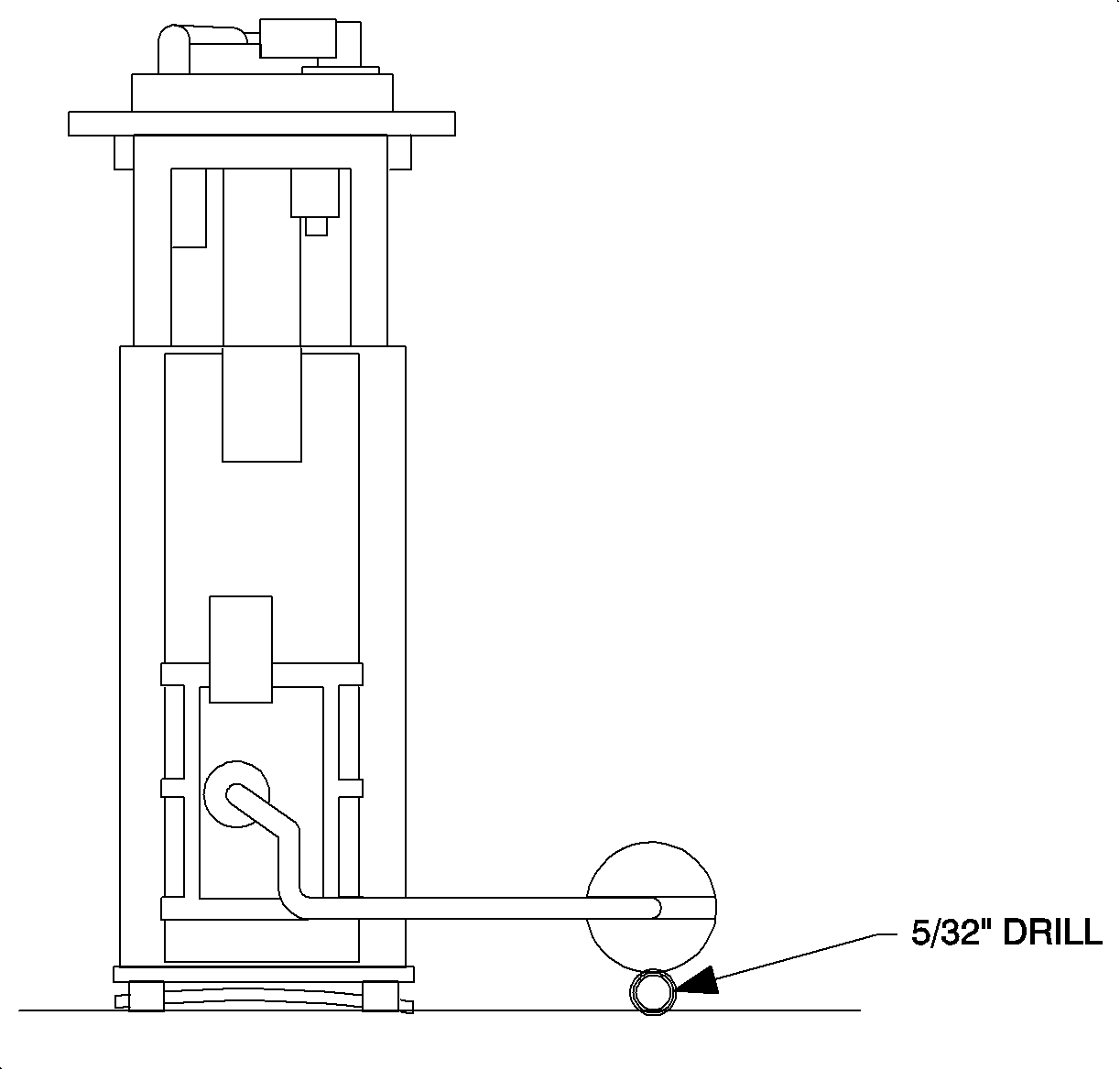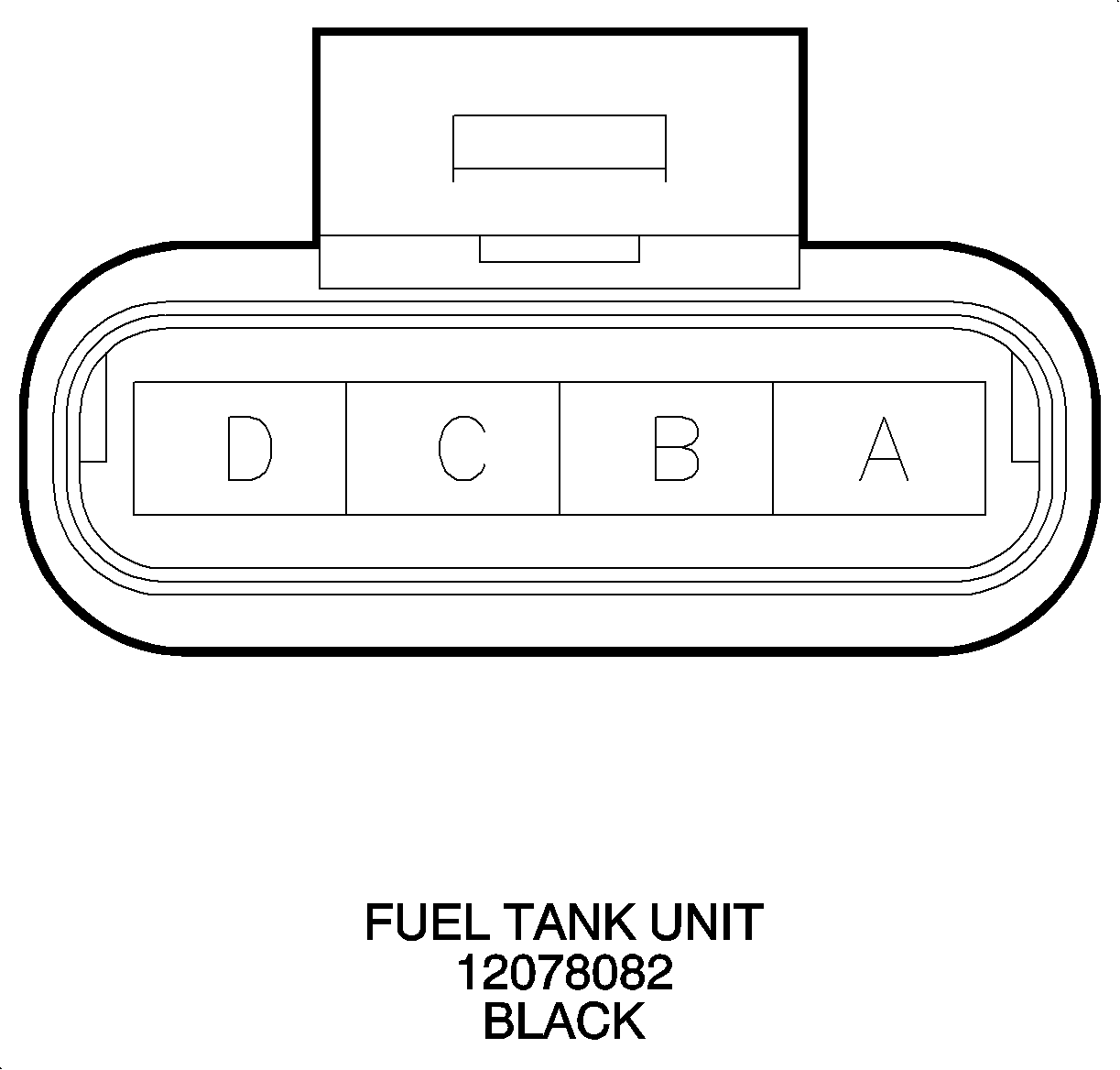Vehicle Runs Out of Fuel With No Low Fuel Lamp On or Low Fuel Lamp Does Not Illuminate When Fuel Level is Low

| Subject: | Vehicle Runs Out of Fuel With No LOW FUEL Lamp On or LOW FUEL Lamp Does Not Illuminate When Fuel Level Is Low |
| Models: | 1997 - 1999 |
Condition
Some customers may comment that the vehicle runs out of fuel with no LOW FUEL lamp On or LOW FUEL lamp does not illuminate when vehicle is nearly out of fuel.
Cause
Improper fuel level sender float height.
Correction
Adjust float height to proper level using the following procedure.
Important: For 1997 vehicles, if the vehicle runs out of fuel with 1/8 to 1/4 tank of gas indicated on fuel gauge or if initial inspection of fuel tank shows that tank is collapsed in the center of tank, refer to bulletin 96-t-44 before performing the procedure in this bulletin.
FUEL TANK SENSOR RESISTANCE (TANK SENDER) | |||
SNDR PAD | GAUGE READING | APPROXIMATELY OHMS | APPROXIMATE FUEL |
# | |||
40 | < | 18 | 12.2 Gallons (46.2 Liters) |
30 | 3/4 | 68 | 8.8 Gallons (33.3 Liters) |
15 | 1/2 | 113 | 6.2 Gallons (23.5 Liters) |
8 | 1/4 | 163 | 3.1 Gallons (11.7 Liters) |
7 | 174 | ||
6 | 1/8 | 195 | 1.6 Gallons (6.056 Liters) |
5 | 210 | ||
4 | 232 | ||
3 | 315 | ||
2 | 440 | ||
1 | 677 | 1.0 Gallons (3.785 Liters) | |
Low Fuel Telltale Lamp Theory of Operation
The powertrain control module (PCM) monitors the resistance of the fuel level sender (tank sender) as a function of the feedback voltage, and calculates the amount of fuel in the tank. The PCM provides a pulse width modulated (PWM) ground to control the fuel gauge as well as serve as a ground source for the LOW FUEL telltale lamp though Quad Driver "A."
The PCM will turn On the LOW FUEL telltale lamp when the calculated fuel level in the tank reaches approximately 1.5 gallons (5.7 L). The level is calculated by taking a buffered average of the sender resistance. The resistance value used to trigger the LOW FUEL telltale lamp is 519 ohms or more. The sender resistance must vary between 677 and 440 (pad #1 and #2) or be stationary at 677 ohms (pad #1) to trigger the LOW FUEL telltale lamp. The buffer is used to prevent the LOW FUEL telltale lamp from turning On and Off when the level is fluctuating between 677 and 440 ohms (pad #1 and #2).
The time required for the buffer average to drop below 519 ohms will based on driving habits and fuel level. The buffer will rest when the PCM is powered down for more that 10 seconds.
If the LOW FUEL telltale lamp is inoperative when the vehicle is out of fuel, the resistance is not reaching the threshold of 519 ohms.
To correct the condition it will be necessary to bend the float up, which will increase the float level as measured on the bench. This will cause the sender to indicate a higher resistance value for the same level of fuel. If the float level is increased too far, the LOW FUEL telltale will come On with too great a reserve and the fuel gauge will read too low for the actual amount of fuel in the tank.
Procedure
- Check for PCM DTCs. Refer to charts in the appropriate model year Powertrain Controls Service Manual for diagnosis.
- Remove fuel tank from vehicle. Refer to "Fuel Tank" section of the appropriate model year Engine/Fuel/Air Intake/Exhaust Service Manual.
- Drain any residual fuel from fuel tank.
- Remove fuel pump module from fuel tank. Refer to "Fuel Pump Module" section of the appropriate model year Engine/Fuel/Air Intake/Exhaust Service Manual.
- Measure float level by standing fuel pump module in a flat, horizontal surface and measure distance from this surface to bottom of float. A 4 mm (5/32 in.) diameter drill bit can be used as gauge. The gauge must freely pass between float and horizontal surface with no more than 1.6 mm (1/16 in.) of clearance.
- Install fuel pump module into the fuel tank. Refer to the "Fuel Pump Module" section of the appropriate model year Engine/Fuel/Air Intake/Exhaust Service Manual.
- Place fuel tank on a flat, horizontal surface and fill 1.5 gallons (5.7 L) of fuel in tank.
- Using a DVOM and connector test adapter kit SA9206Z, measure resistance of fuel level sender at fuel pump module connector terminals "B" and "C". While measuring resistance, move tank to "slosh" fuel.
- After installing fuel tank in vehicle, verify that low fuel lamp illuminates with less than 1.5 gallons (5.7 L) of fuel in tank.

Notice: If float arm requires repositioning to meet clearance specification, ensure that any bending is performed at 90 degree bend near fuel level sender. The short section of float arm going into fuel sender must be supported to avoid bending the fuel level sender.

| • | If float level is less than 4 mm (5/32 in.) adjust float level to 4 mm (5/32 in.). |
| • | If the float level was at 4mm (5/32 in.) or greater, increase float level by 1.6 mm (1/16 in.). |

| • | If resistance remains at approximately 677 and 440 ohms, float level is correct and fuel tank can be reinstalled in vehicle. Refer to "Fuel Tank" section of the appropriate model year Engine/Fuel/Air Intake/Exhaust Service Manual. |
| • | If resistance remains at approximately 440 or fewer ohms, fuel pump module must be removed and float level increased by 1.6 mm (1/16 in.). Continue to increase float level by 1.6 mm (1/16 in.) increments until resistance fluctuates between approximately 677 and 440 ohms when fuel is "sloshed." |
| • | If resistance remains at 677 when the fuel is "sloshed," the float arm is adjusted too high as measured on the bench and must be adjusted back down. |
Claim Information
To receive credit for this repair during the warranty coverage period, submit a claim through the Saturn Dealer System as follows:
Case Type | Description | Labor Operation Code | Time |
|---|---|---|---|
VW | Adjust Fuel Level Sender Float | Z4023 | 1.7 hrs |
